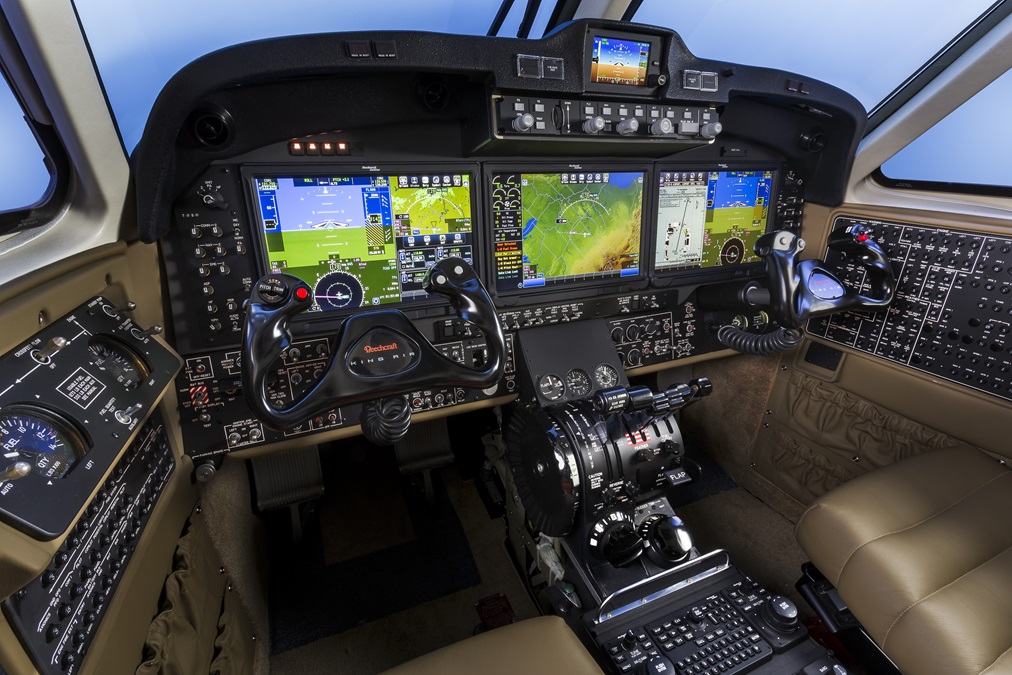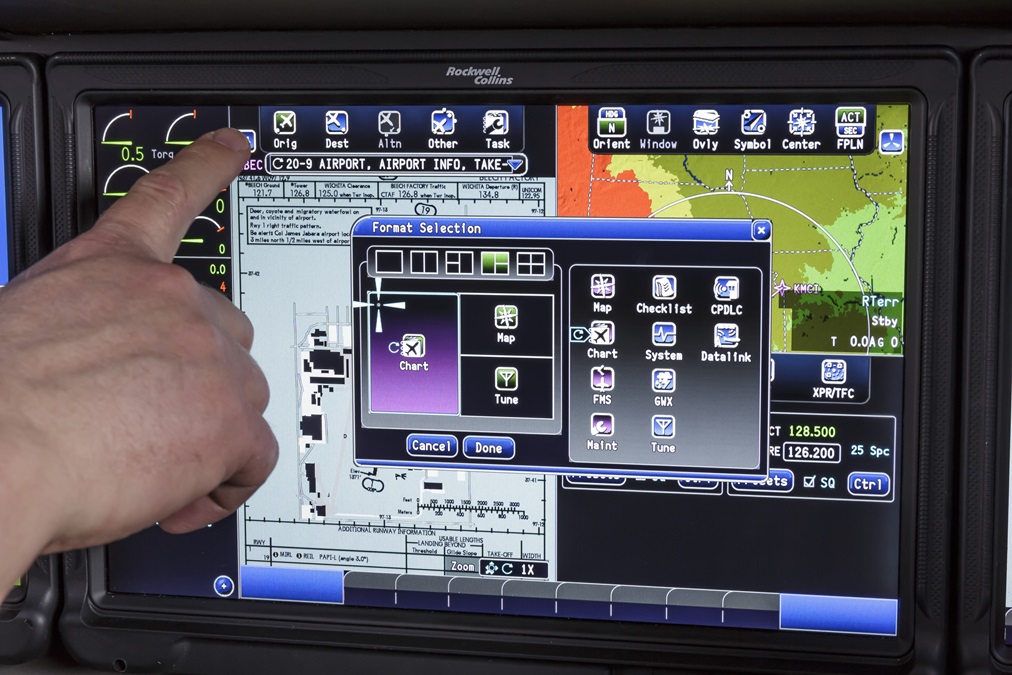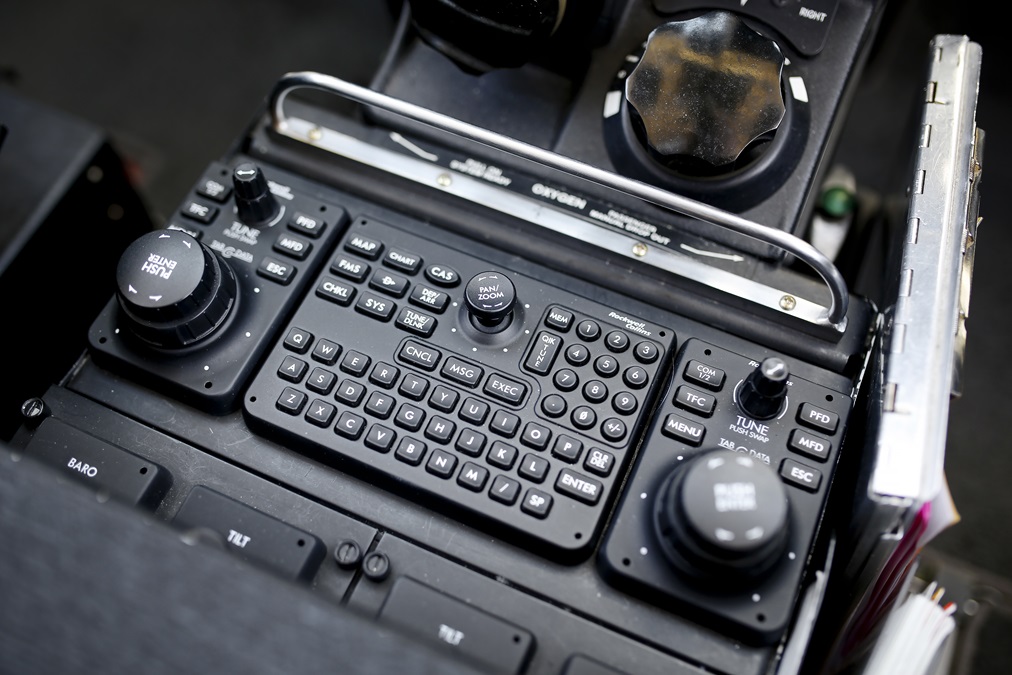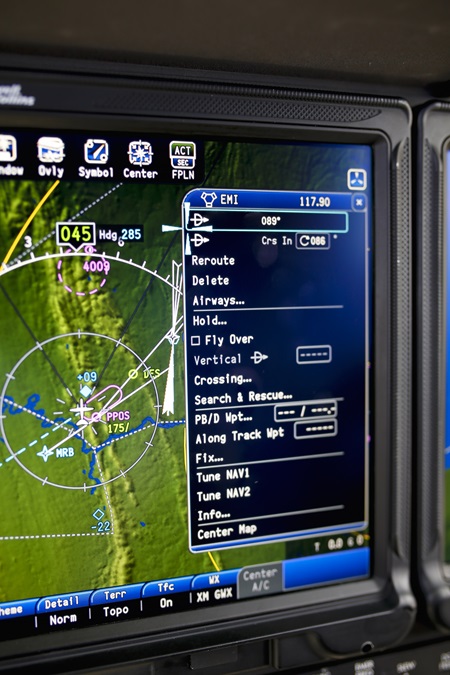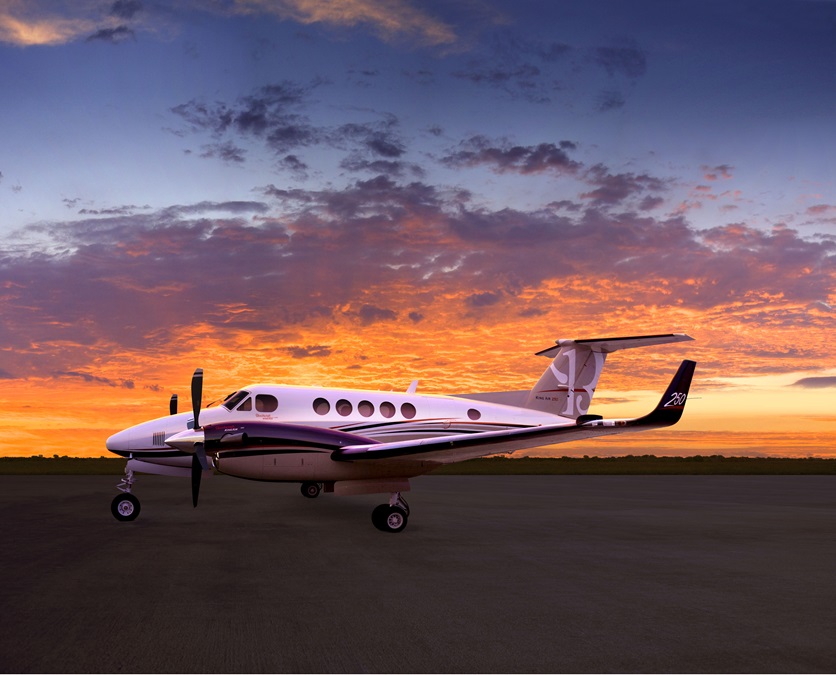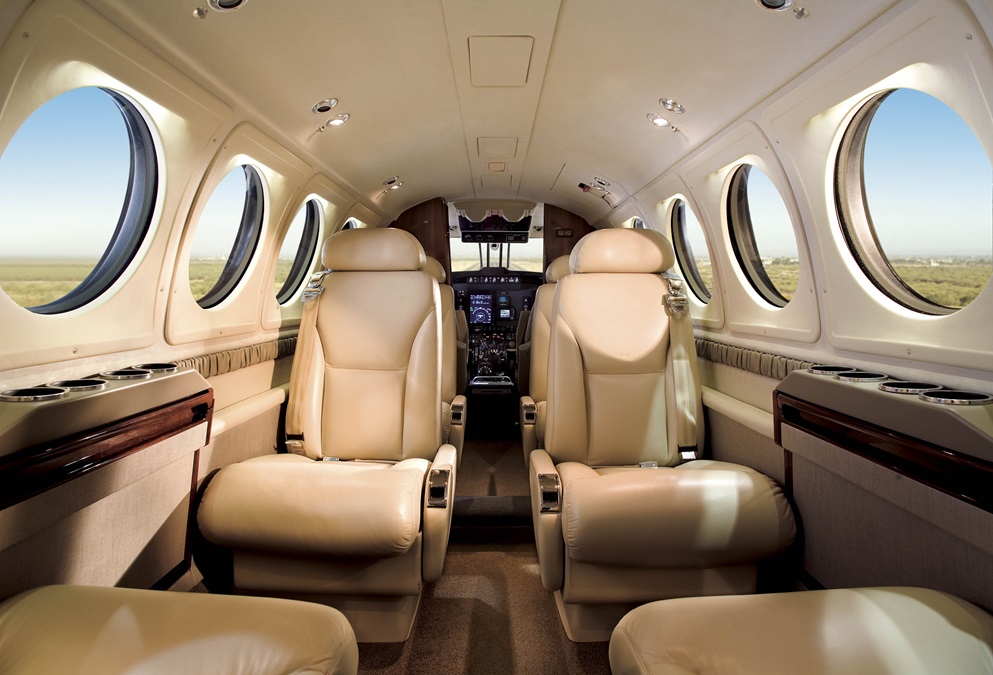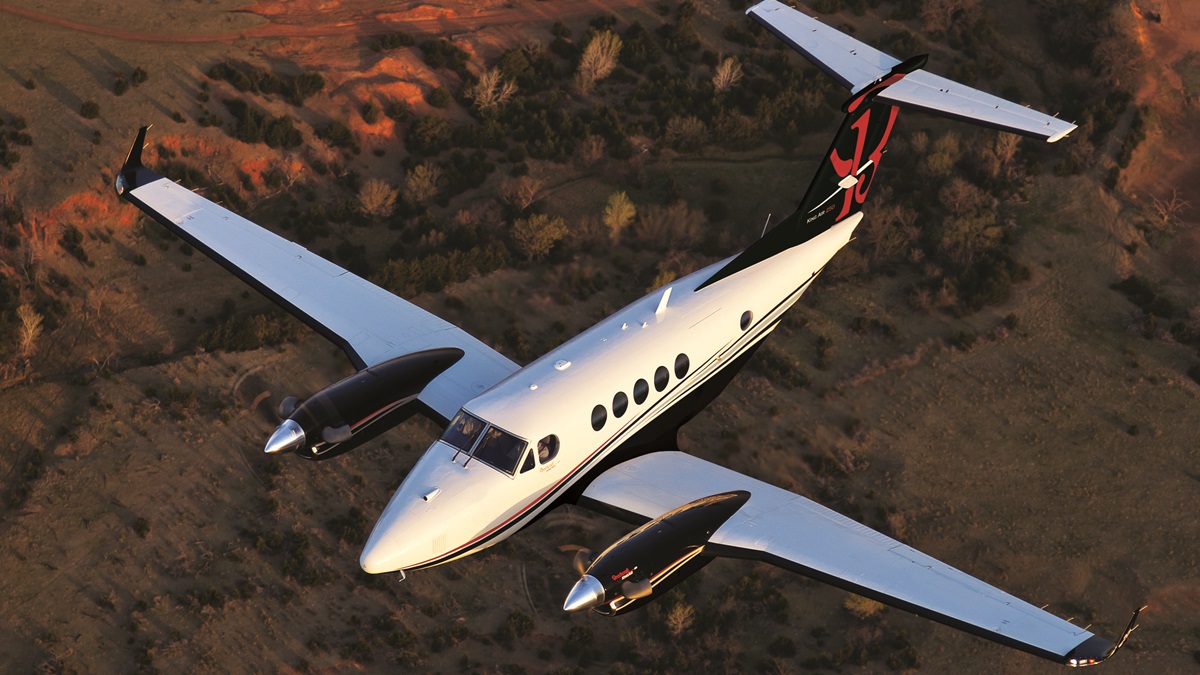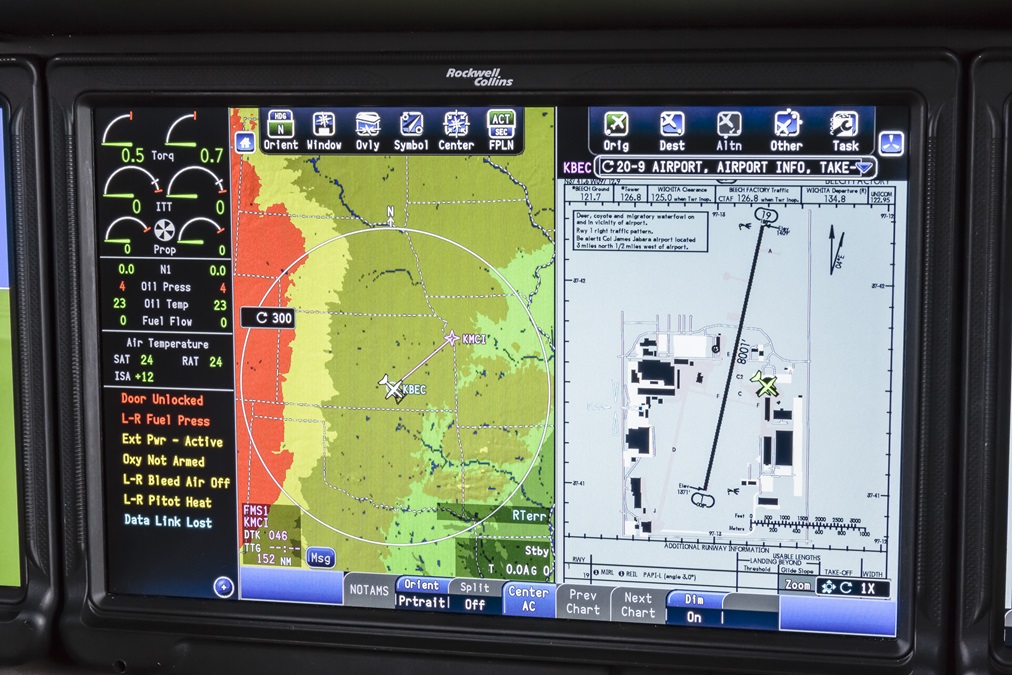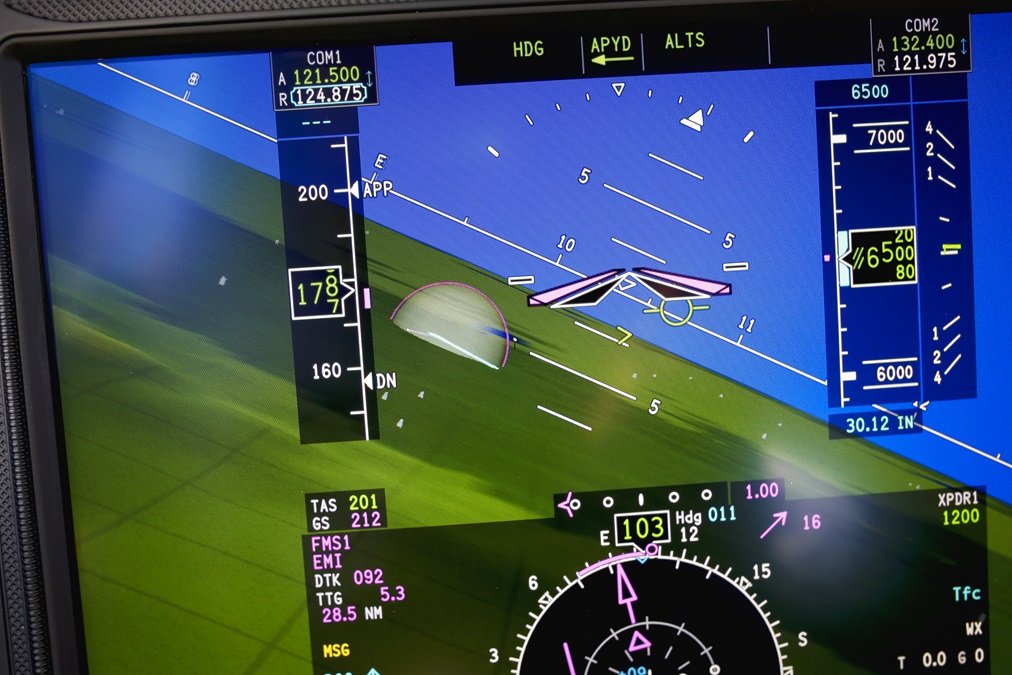Long live the King
King Air 250 is all new, inside and out
More air, more power
The ram air recovery system (RARS) is important because it maximizes the volume of airflow to the engine, which keeps interstage turbine temperatures (ITTs) lower. This translates into more available power at altitude, particularly when air temperatures are above standard. What’s more, the Raisbeck design’s ice vanes have an airfoil shape. This preserves laminar flow into the engine inlets, whether the ice vanes are deployed or stowed. With most ice vanes—which divert ice, dirt, and other particles away from the engine intakes and compressors to prevent internal damage—the designs are more like flat trap doors. Less air goes to the engine, and a lot of turbulent intake air with the doors deployed, so ITTs run hotter.
What’s the operational significance? Normally, as a turboprop engine climbs through the thinner air of the high teens, ITTs reach their redlines. That means you can’t apply any more torque, and power and performance continue to suffer as the airplane climbs—especially if temperatures are much above standard. If the ice vanes are in use, ITTs will run even hotter. With the ram air recovery system, Textron says that more power from the 250’s 850-shaft-horsepower Pratt & Whitney PT6A-52 engines can be carried into the high twenties, and even the low thirties. With more torque and power available at all altitudes, this means better climb rates and cruise performance, without the worry of blasting into an expensive ITT redline excursion. There’s more power for hot and high takeoffs, too.
Lighter, quieter, durable props
Hartzell’s composite propellers are another King Air 250 standard item. Textron says the swept blades translate into lower tip speeds, and less perceived noise in the cabin. The cabin’s 36 internal vibration dampeners are tuned to best reduce noise at 1,700-rpm propeller settings, where Textron says drops of three to four decibels occur.
The propellers have nickel-alloy leading edge strips that prevent erosion and nicks. The blades are not life-limited, although TBOs come at 4,000 hours or six years.
Recent options
Those with a need to operate out of unimproved strips can order their 250s with the $28,900 “high flotation” landing gear option, which has proven popular among South American customers. This includes longer landing gear struts and bigger, wider tires; Kevlar flap panels; and a wire cage around the belly-mounted beacon to prevent damage from rocks and other objects thrown up during takeoffs and landings.
In 2014, an increased gross weight option was announced. This EP (enhanced payload) feature runs $125,000 and puts the airplane’s max takeoff weight at 13,420 pounds—up from the standard 250’s 12,500 pounds. At 3,645 pounds/546 gallons, the 250 has a lot of fuel capacity, but full-fuel payload is a discouraging 115 pounds. For this reason, the standard procedure is to fill only the outboard fuel tanks—which, at normal cruise power, lets you fly four passengers 1,100 nautical miles with NBAA IFR reserves, and gives you a 4.5-hour endurance.
This fits most typical missions. But for those needing to fly more payload farther, the EP is the ticket. It gives you a 1,015-pound full-fuel payload. The EP’s weight puts it in the FAR Part 23 Commuter category, so you’ll have to earn a type rating to fly it.
Fusion Touch debut
The latest King Air innovation has been the Rockwell Collins Pro Line Fusion Touch avionics suite. This replaces Rockwell Collins’ older Pro Line 21 with three 14-inch, interactive touchscreen displays. Also included is a large pedestal-mounted keypad. This is a big-iron, state-of-the-art avionics step up for the King Air 250, and Turbine Pilot discussed the avionics package in an earlier story (“Touch and Go,” September 2015).
The system is so full-featured that there’s simply no way to go into its operational modes in any real depth here. But here are the basics. The operational mantra recited by Textron demonstration pilot Justin Phillips is simple: “If you want the avionics to do something, then touch something.” Want to plug in V-speeds? Then tap on the PFD’s speed tape and up pops a menu you fill using the numbers on the MKP (multifunction keypad). Want to join an airway, fly direct to a fix, hold at a fix, listen to an ATIS, rearrange your screen views, or rubber-band your route around storm cells? Then touch the corresponding symbols on the MFD. Menus will appear, offering all manner of choices. This even extends to loading approaches, a process that calls for touching an airport symbol, which in turn causes a list of options to appear—one of them being arrival, approach, and departure procedure names. Touch the entry you want, and the procedure is automatically inserted into the flight plan.
One way of setting up a flight plan is to work both the multifunction keypad and the displays. Press the MKP’s FMS hot key and enter the airport of origin’s ID, which then appears on a scratchpad at the lower edge of the MFD. Touch the MFD’s Orig window on the screen’s Plan symbol, then touch the Paste icon, and the identifier is set. Similar cut-and-paste techniques can be used for departure, routing, cruise altitude, arrival, and destination airport information. Finally, press the MKP’s Execute button, and the flight plan is ready for action.
Phillips says that everything you can do using the old-school keypad data entry method, you can carry out using the touchscreen menus. “At first, we thought pilots would prefer the keypads,” said George Palmer, Rockwell Collins’ senior captain and flight test and analysis pilot. “But once people use the touchscreens, they get hooked.”
The upshot is that the touchscreens minimize the head-down time that can plague Pro Line 21 pilots. And using the touchscreens is faster. Tuning a VOR or communications frequency takes just two actions, for example. With the “old” Pro Line 21, five steps are required.
Of course, the Pro Line Fusion Touch comes with all the additional features you’d expect of a high-end suite: terrain awareness and warning system (TAWS); traffic collision avoidance system (TCAS); weather radar; XM WX datalink weather; dome symbols that mark departure, destination, and alternate airports; lead-in lines and range markers to runways, and much more. It sounds trite, but you have to experience it to appreciate all the capability.
Which is to say, the Pro Line Fusion Touch is a big meal. It’s sensory overload at first. Phillips says that it takes about 10 to 15 hours of in-flight learning to gain fluency with the system.
Test driving
Phillips and I flew the new King Air 250 from Textron’s home base in Wichita to AOPA’s regional fly-in in Beaufort, North Carolina. It was a four-hour trip, total, with an intermediate stop north of Charlotte, North Carolina, at the Concord Regional Airport.
For the takeoff from Wichita’s Dwight D. Eisenhower National Airport it was ISA +13 degrees and we were light, with three aboard and partial fuel. V1, VR, and VFS were 102, 109, and 116 knots, respectively, and we maintained a 1,400-fpm climb rate through 11,000 feet. Through 19,000 feet on our way to 31,000 feet, we had torque set at 2,100 pounds per foot, but our ITTs were 745 degrees Celsius, well below their 775-degree redlines. “A B200 would have temped out at about 15,000 feet,” Phillips said. So on we went, climbing at 1,200 fpm through 25,000 feet while burning 330 pph per side. And with the props at 1,700 rpm it was remarkably quiet.
In cruise at FL310, we saw a max-cruise, 293-knot true airspeed while burning 560 total pph in the ISA +5 degree conditions. Cabin altitude was 9,000 feet. It was a 500-fpm climb at 150 knots to FL350, where we turned in 282 knots burning 480 pph. A 65-knot tailwind helped out, and we used the XM WX display to help us steer around the tops of a few thunderstorm clusters. At long-range cruise power settings, Phillips ran the number and said we would have been burning much less fuel—366 total pph, or about 55 gph—and seeing a 236-knot true airspeed at our 11,000-pound weight. But the cabin was at 10,500 feet—not ideal for some. So we spent the rest of the trip at FL310.
That says something right there. You don’t see many King Airs tooling along in the low thirties. Like most turboprops, they’re happiest, and fastest, in the high twenties. At FL280, the King Air 250 hits its 312-KTAS max cruise speed—in ISA conditions and at a 10,000-pound weight.
Phillips schooled me on the Pro Line Fusion Touch during the flights, commenting at one point that the system was “somewhere between Garmin and Rockwell Collins” in its operating philosophy. By this he meant that Rockwell Collins was getting away from its text-heavy, data-entry dependence in favor of Garmin’s emphasis on graphic drop-downs and other menu-driven strategies.
Soon enough, we were on final to Runway 8 at Beaufort’s Michael J. Smith Field Airport. Our airspeed down final was 100 knots, with a power reduction to 350 to 400 pounds per foot of torque for the flare. If you don’t carry a little power into the flare, those big prop blades flatten in pitch, you lose lift, and say hi to a graceless landing. This was proven earlier in the day, landing out of the ILS at Concord. This time, it was a roll-on, never-knew-we-touched-down landing. We taxied up to the aircraft display area, where the airplane towered over all the rest. It’s a good feeling.
Email [email protected]

